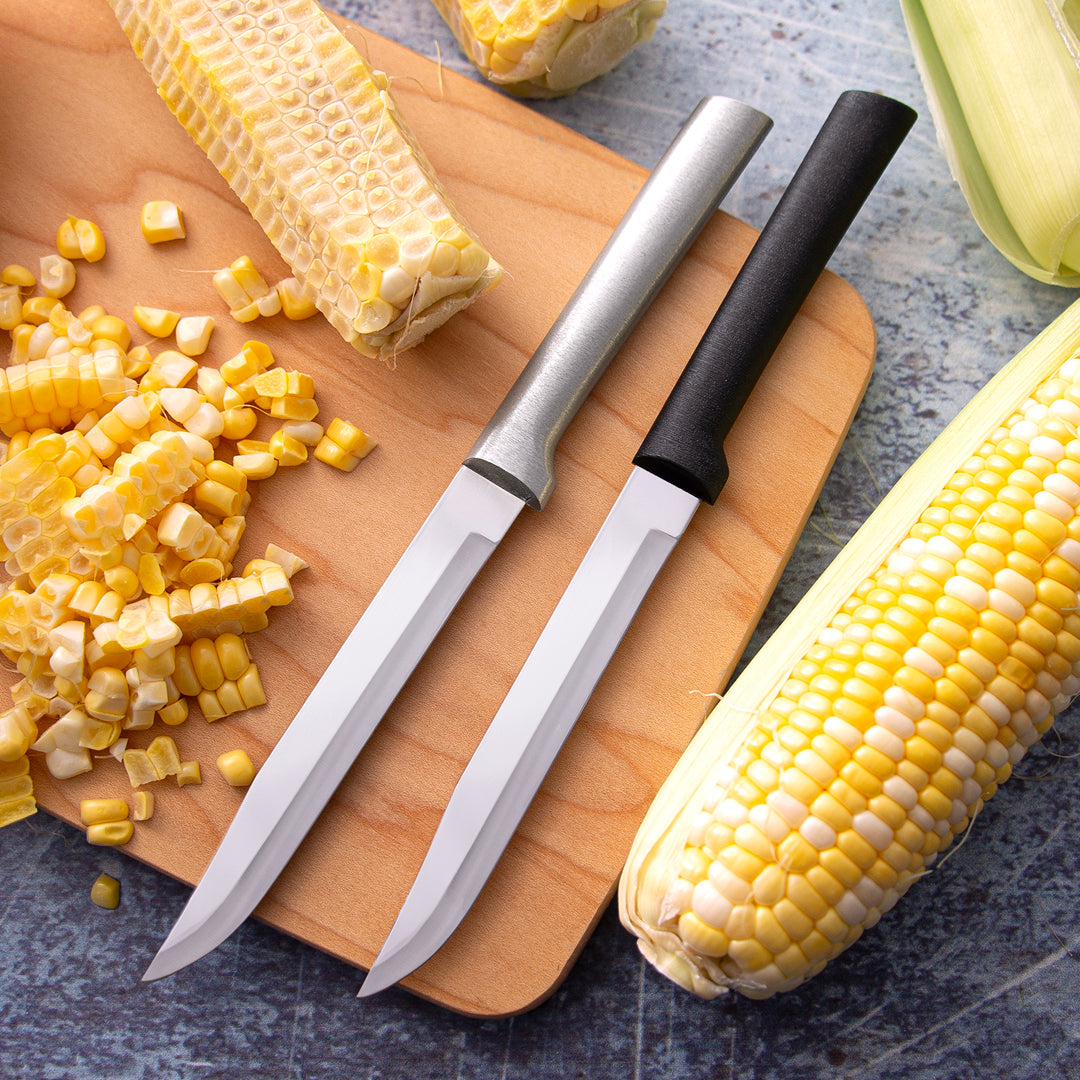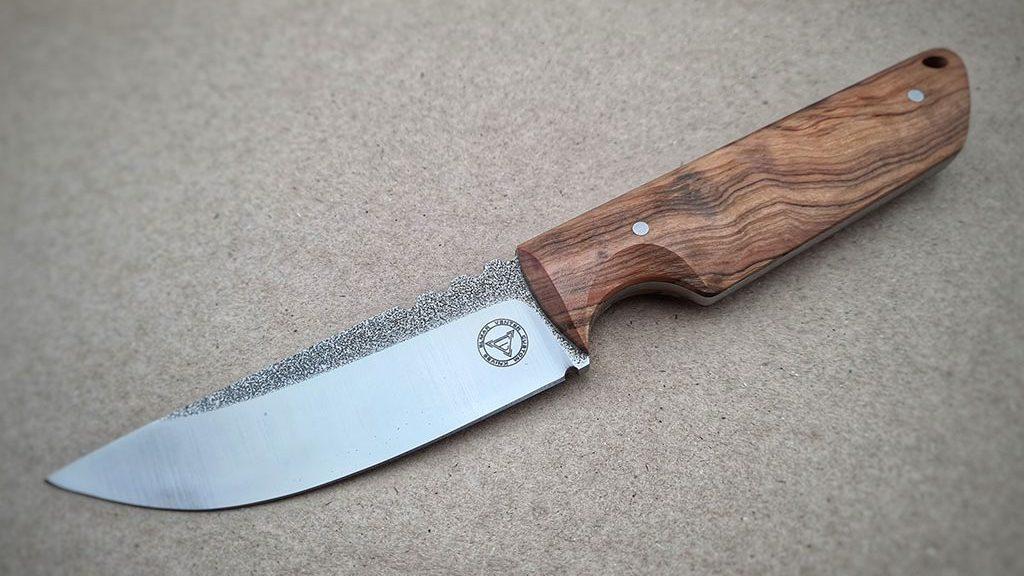Japanese Knife Handles v.s. Western Knife Handles: What's the Difference?
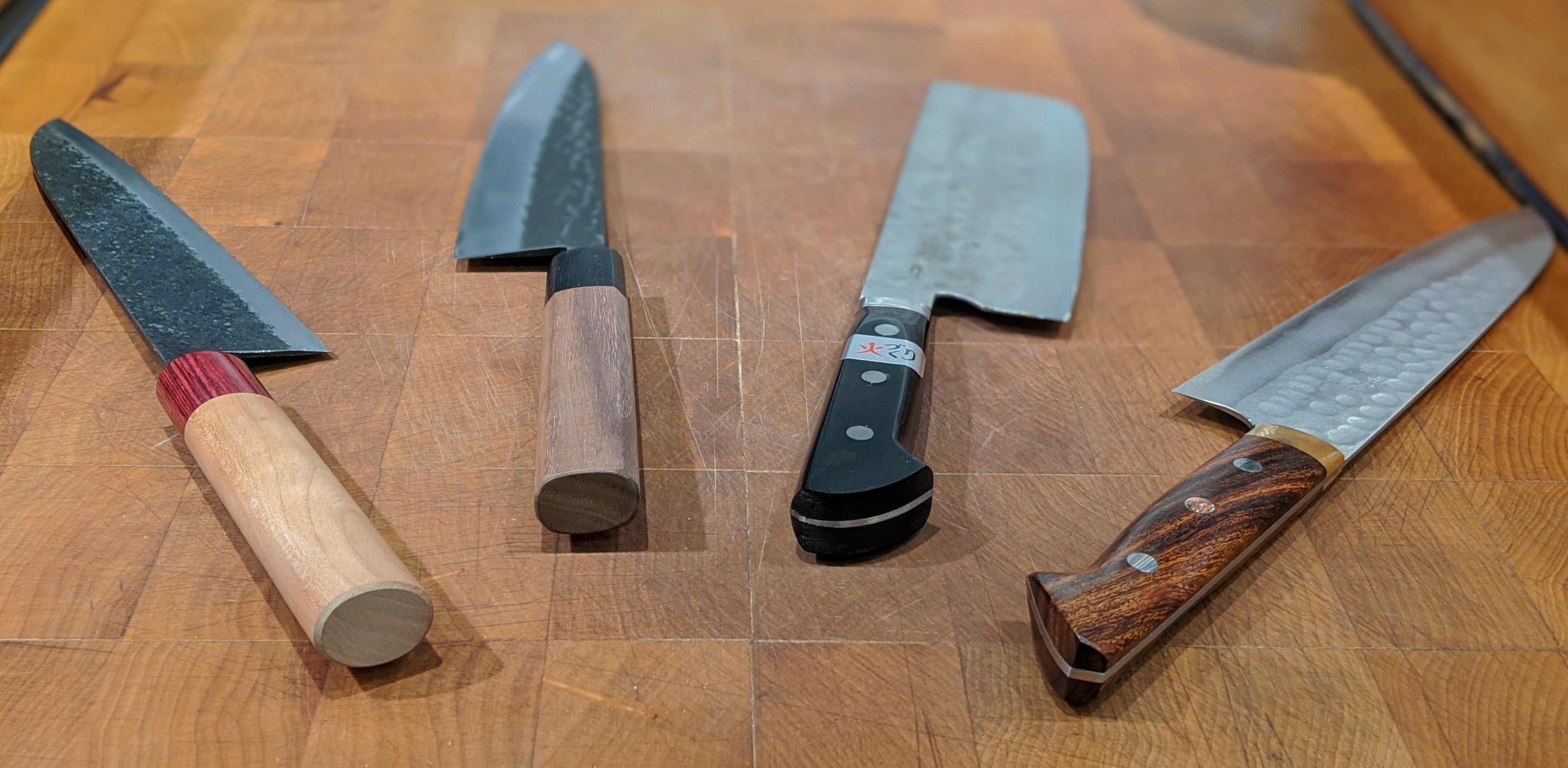
Japanese Knife Handles v.s. Western Knife Handles: What's the Difference?
While the humble knife handle is often overshadowed by its flashier companion, the blade, your choice of knife handle is an important one. It could be with you for the rest of your life, and it’s the part of the knife that you’ll spend the most time with. Knife handles can be divided into two very simple categories: Japanese (Wa, in Japanese) handles, and Western (Yo) handles. Most of us in North America are more familiar with the European style riveted handle with either a full or half tang, (meaning the tang goes either half way or all the way through the handle). Both wa and yo styles have a ton of utility, and your choice will come down to your preference of weight, ergonomics, and which one you think is better looking, of course. Western Handles Chances are, you.
While the humble knife handle is often overshadowed by its flashier companion, the blade, your choice of knife handle is an important one. It could be with you for the rest of your life, and it’s the part of the knife that you’ll spend the most time with.
Knife handles can be divided into two very simple categories: Japanese (Wa, in Japanese) handles, and Western (Yo) handles. Most of us in North America are more familiar with the European style riveted handle with either a full or half tang, (meaning the tang goes either half way or all the way through the handle). Both wa and yo styles have a ton of utility, and your choice will come down to your preference of weight, ergonomics, and which one you think is better looking, of course.
Western Handles
Chances are, you own a knife (or a block of 16) with this handle. This classic, three rivet style has existed for centuries in Europe, but was famously touted as a sign of quality by a well-known knife maker in recent decades. You know, the one with the stick-men on the blade.
While a heavy, riveted handle is possibly over-engineered for a precision tool like a Japanese kitchen knife, they’re rightfully a great choice. They’re classic looking, have a nice weight in the hand, and many western cooks and chefs are just used to them. While few people really need a kitchen knife with a handle that durable, many of us often prefer a heftier handle, including many Japanese knife makers. This style offers a certain sense of security while you’re using it, and nothing beats that.
Some of our favourite Western-handled knives. From left to right: Sugimori, Fujiwara Maboroshi, Haruyuki Goma, Masakage Zero.
The other main benefit of a western handle is ergonomics. Many western style handles are contoured, meant they fit the hand in a more natural way. The Masakage Zero is a shining example of the ergonomics and aesthetics that a western handle can be elevated to. While this knife is made from amazing steel by a talented blacksmith, you better believe I bought mine because of the sexy handle. Knifewear favourite Teruyasu Fujiwara-san also favours western handles. He feels that they’re a superior design, and even builds a finger-notch into his blades that allows you to hold the knife properly (pinched near the heel of the blade).
A few of our favourite lines with western handles are:
Masakage Zero, for their flashy gorgeous handles.
Fujiwara Denka and Maboroshi for the finger-notch.
Tojiro DP, for their incredible quality and affordability.
Sugimori, because they're gorgeous and designed by our Calgary manager Kasumi.
Haruyuki Goma and Mugi, which both make excellent introduction knives and even better gifts.
Japanese Handles
This is the new challenger in North America, the unexpected twist that people come to love. Like many aspects of Japanese knives, the handles are designed for function, and simple, yet beautiful, aesthetics. Because Japanese knives don’t have the thick, riveted tang that German knives do, they can slip more elegantly into their handle, allowing the handle material to shine on its own. Some folks worry that this style of handle may be weak, but unless you’re using your knife to drive nails into a wall, they hold up just great. Because they’re not riveted in place, they’re also much, much easier to replace if something does happen to it. You can do it yourself, or you can just drop it off at your local Knifewear shop and we’ll turn it as quick as we can!
Our top picks for Japanese-style handles. From left to right: Haruyuki Kokuto, Fujimoto Hammer Tone, Haruyuki Shiso, Moritaka Ishime, Fujimoto Nashiji.
Compared to western handles, these are much lighter. There is way less steel in the handle, so the knife’s center of balance is further toward the blade, rather than the handle. When I first tried a Japanese knife, I fell in love with it instantly. Because I’m a very lazy person, I loved the way that the blade practically fell through the food on its own. Rather than me having to “drive” the knife, I was simply helping it along as it did most of the work. This trained me to cut more gently. A more gentle action against the cutting board helps your knife stay sharp longer.
Japanese handles are also available in a wide variety of wood types, each adorned with a “collar”, usually made of a more dense material such as Pakkawood, which protects the softer wood of the handle.
Here's a few of our favourite knives with Japanese handles:
Moritaka Ishime, they're made by a 700+ year old knife making family, and the finish is exclusive to us!
All of Masashi-san's knives, because they're crazy sexy and super well-made.
Haruyuki Shiso, they're crazy hard and high-performance, and some of the most consistent knives out there!
Fujimoto Hammer Tone and Nashiji, because they're super affordable handmade knives!
Ultimately, the choices should come down to what feels good in your hand, and what looks best to you. Most knife collections we see at the shops contain a variety of different handles, and many knife nerds like myself find that we choose different types of handles to go with different shapes of knife. If you like ‘em big and chunky, go western. If you want something a little more elegant and lightweight, go Japanese. If you have a preferred type of handle, it makes choosing much easier by cutting the selection in half. If you're in the store, let us know your preference, or toggle western v.s. Japanese handle on the sidebar when you're shopping online.
At the end of the day, you’re going to fall in love with your knife either way. Happy chopping!.
Canada's best selection of Japanese Knives, sharpening stones, and chef's tools. Mail-in and in-store knife sharpening services available.

Jikko New 67 Layers Carbon Steel Japanese Knife Set - Original Series - Kitchen Knife Set with Walnut and Mahogany Wood Handles - 6 Japanese Chef's

How to Choose a Japanese Kitchen Knife for Beginners – SAKAI

What are Gyuto Knives Used For? - Hasu-Seizo
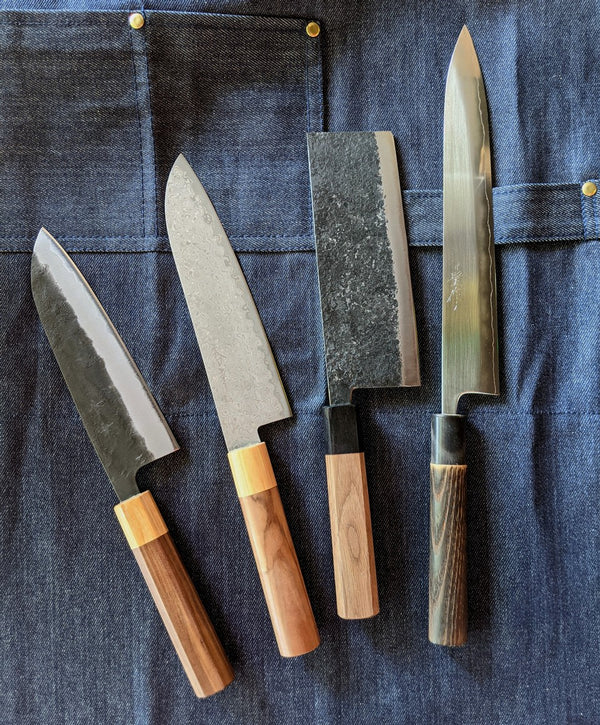
Why are Japanese Knife Handles Made Out of Wood?
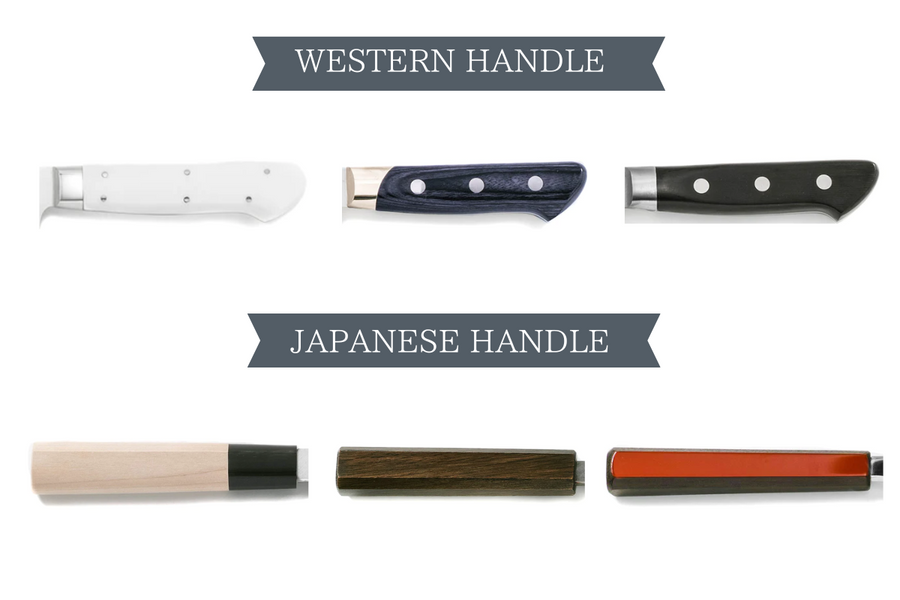
How to Choose a Japanese Kitchen Knife for Beginners – SAKAI

Japanese Knife Handles Vs. Western Knife Handles: What's the
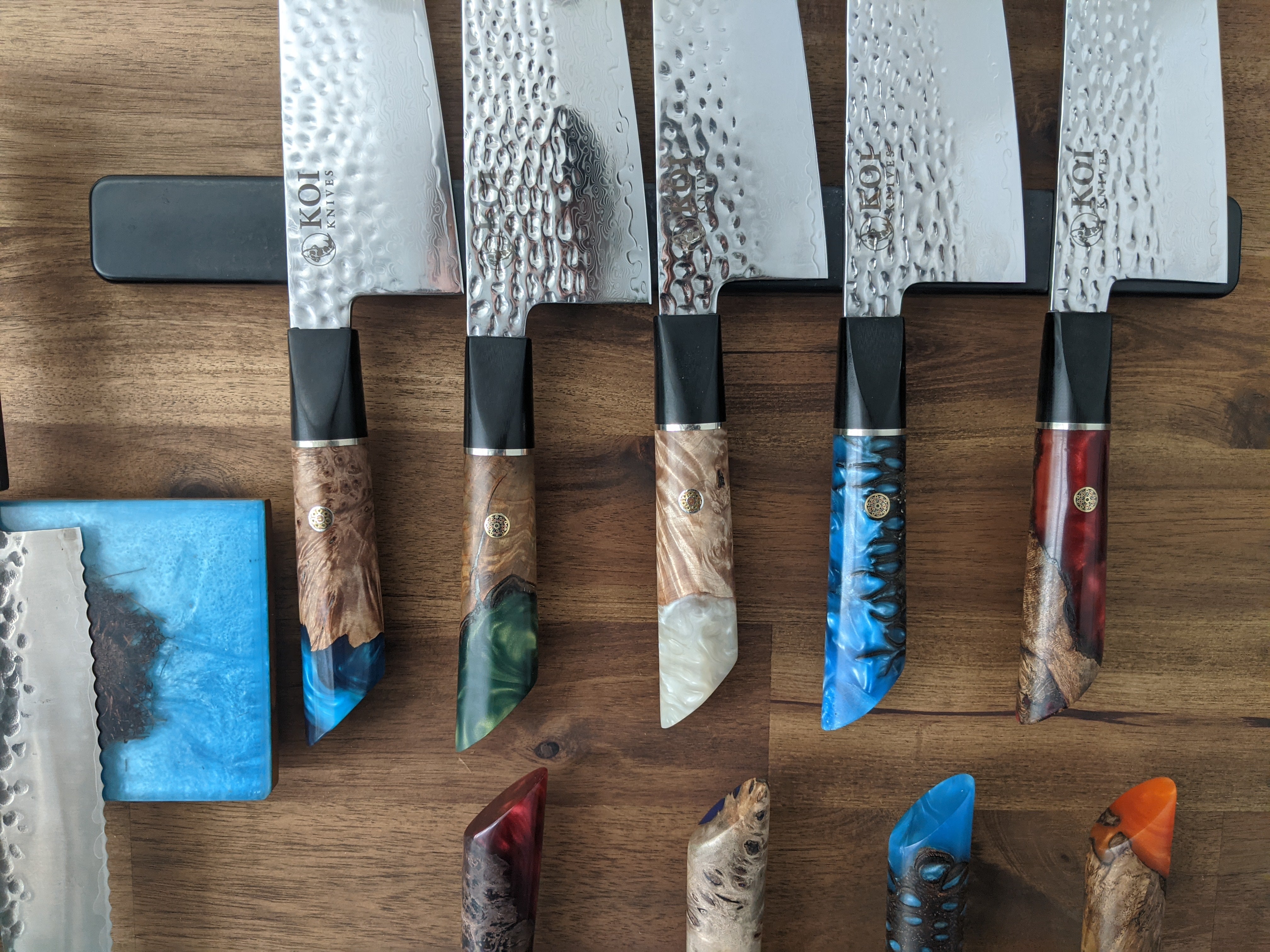
Japanese vs Western Knife Handles– Koi Knives
:max_bytes(150000):strip_icc()/faw-best-japanese-knives-tout-social-b4f085ab7d6544ad8ee5e2410fad8c0c.jpg)
The 8 Best Japanese Knives of 2024, Tested and Reviewed

The Santoku Knife vs the Western Style Chef's Knives– Koi Knives
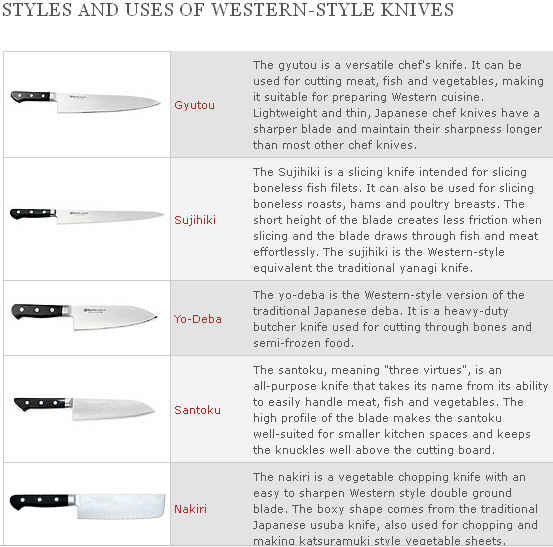
Sushi Knife or Sashimi Knife? What's the difference?

Best Japanese Chef Knives – Six Recommends
:max_bytes(150000):strip_icc()/SES-Renu-Japanese-Knives-5-Renu-Dhar.jpg-135f08f4793b456589cefcf5dc70f9e7.jpg)
The 8 Best Japanese Knives of 2024, Tested & Reviewed
